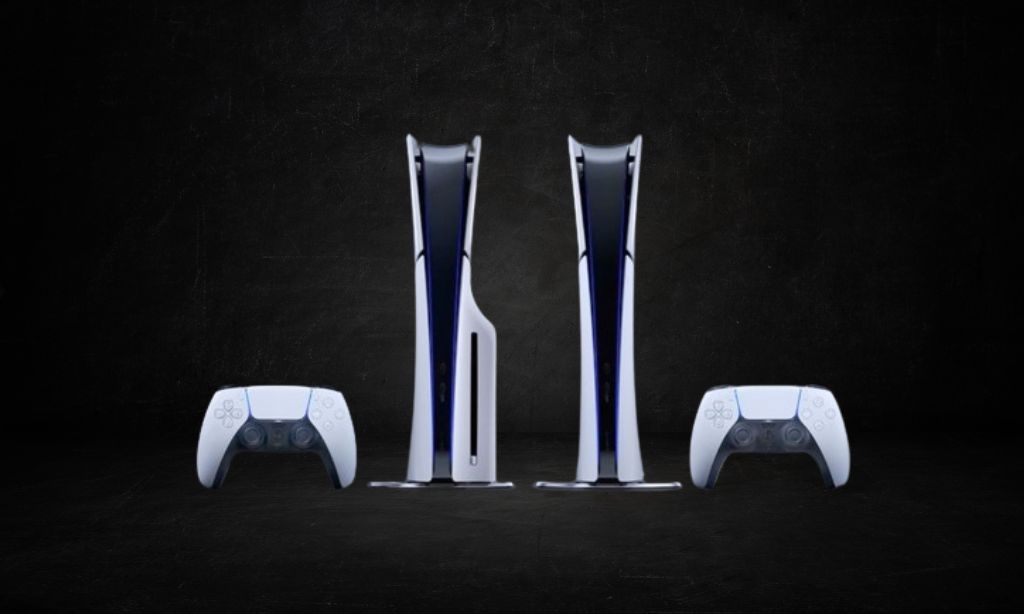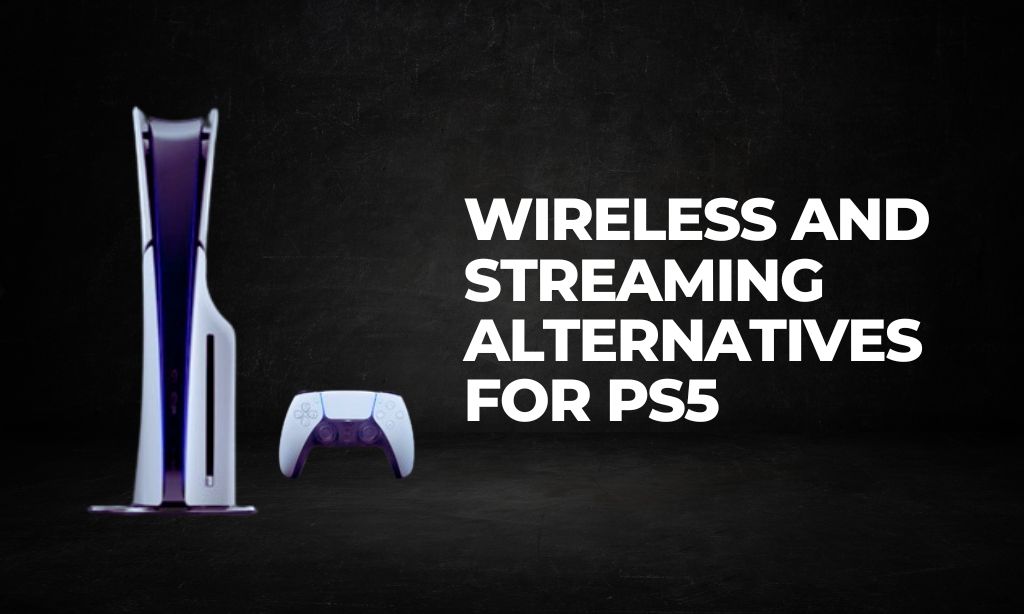Connecting your PS5 to a TV without HDMI can seem like a daunting task, but it’s actually quite simple. Perhaps you have an older TV with only AV inputs, or maybe you want to connect your PS5 wirelessly. Whatever your reason may be, there are a few methods you can use to connect your PS5 to your TV without HDMI.
One option is to use an HDMI-to-AV converter, which takes the HDMI output from your PS5 and converts it to AV signals that are compatible with your display. Another option is to use a wireless connection, which requires a compatible wireless adapter and a wireless router. Additionally, you can use a DVI cable to connect your PS5 to your TV, but you’ll need a converter box to convert the HDMI signal to DVI.
Understanding PS5 Connectivity Options
When it comes to connecting your PS5 to your TV, there are a few different options available to you. Understanding these options is important in order to ensure that you are able to get the best possible gaming experience. In this section, we will explore the different connectivity options available to you.
Identifying Available Ports on Your TV
The first step in connecting your PS5 to your TV is to identify the available ports on your TV. Most modern TVs come equipped with HDMI ports, which is the most common way to connect your PS5 to your TV. However, if your TV does not have an HDMI port, there are alternative ports that you can use. These include RCA, VGA, and DVI ports.
Exploring PS5 Cable Alternatives
If your TV does not have an HDMI port, or if you simply prefer to use an alternative cable, there are a few different options available to you. One option is to use an HDMI-to-AV converter, which will allow you to connect your PS5 to your TV using an AV cable. Another option is to use a wireless connection, which will require a compatible wireless adapter and a wireless router.
It is important to note that while alternative cables may work, they may not provide the same level of quality as an HDMI cable. HDMI cables are designed to provide the best possible picture and sound quality, and using an alternative cable may result in a lower quality gaming experience.
In conclusion, understanding the different connectivity options available to you is important in order to ensure that you are able to get the best possible gaming experience. If your TV does not have an HDMI port, there are alternative ports and cables that you can use, but it is important to keep in mind that these may not provide the same level of quality as an HDMI cable.
Setting Up PS5 with Non-HDMI Connections

Connecting a PS5 to a TV without an HDMI input can be a daunting task, but it is possible. In this section, we will explore how to connect PS5 to TV without HDMI.
Using HDMI Converters for AV Inputs
If you have an older TV or display with AV inputs (such as RCA or component), you can use an HDMI-to-AV converter to connect your PS5. This converter will take the HDMI output from your PS5 and convert it to AV signals that are compatible with your display. To use this method, follow these steps:
- Purchase an HDMI-to-AV converter that is compatible with your TV or monitor’s AV inputs.
- Connect the HDMI cable from your PS5 to the HDMI input on the converter.
- Connect the AV cables from the converter to the AV inputs on your TV or monitor.
- Turn on your TV or monitor and switch to the correct AV input.
Connecting to Older TVs and Monitors
If your TV or monitor is older and does not have AV inputs, you can still connect your PS5 using a VGA-to-HDMI or DVI-to-HDMI converter. These converters will take the VGA or DVI output from your TV or monitor and convert it to HDMI signals that are compatible with your PS5. To use this method, follow these steps:
- Purchase a VGA-to-HDMI or DVI-to-HDMI converter that is compatible with your TV or monitor’s output.
- Connect the VGA or DVI cable from your TV or monitor to the VGA or DVI input on the converter.
- Connect the HDMI cable from the converter to the HDMI input on your PS5.
- Turn on your TV or monitor and switch to the correct input.
It is important to note that using converters may result in a loss of image quality or resolution. Additionally, not all converters are created equal, so it is important to do your research and choose a high-quality converter that is compatible with your TV or monitor and PS5.
In conclusion, connecting a PS5 to a non-HDMI TV or monitor is possible with the use of converters. Whether you use an HDMI-to-AV converter or a VGA-to-HDMI or DVI-to-HDMI converter, following the steps above will allow you to enjoy your PS5 on any type of display.
Adjusting PS5 and TV Settings for Optimal Performance
Configuring the PS5 and TV settings is crucial to get the best gaming experience. It is important to ensure that the settings are correctly adjusted to achieve the best possible resolution and image quality. In this section, we will cover how to configure the PS5 and TV settings for optimal performance.
Configuring the PS5 System Settings
To configure the PS5 system settings, navigate to the settings menu on the PS5 home screen. From there, select the “Screen and Video” option. You will find various options to configure the video output signal, resolution, and frame rate.
Firstly, make sure that your PS5 is connected to the TV through an HDMI port. If you don’t have an HDMI port, you can use an HDMI to VGA converter or an HDMI to DVI converter. However, keep in mind that using these converters may affect the image quality.
Next, select the “Video Output Information” option to check if the PS5 is detecting the TV’s resolution and frame rate correctly. If not, select the “Resolution” option and set it to the recommended resolution for your TV. If your TV supports 1080p resolution with 60fps, choose that option. If your TV supports 4K resolution with 120fps, choose that option.
Tweaking TV Display Settings
After configuring the PS5 system settings, it’s time to adjust the TV display settings. To do this, you need to access your TV’s settings menu. The procedure to access the settings menu may vary depending on the TV model, but it is usually accessible through the remote control.
Once you access the TV’s settings menu, navigate to the display settings. Here, you can adjust the image quality, color, and brightness. Adjust these settings according to your preference and the TV’s capabilities.
If your TV supports HDMI 2.1, make sure to enable it in the TV settings. HDMI 2.1 provides higher bandwidth and faster data transfer, resulting in a better gaming experience.
In conclusion, adjusting the PS5 and TV settings correctly is essential to get the best gaming experience. By following the steps mentioned above, you can configure your PS5 and TV settings for optimal performance.
Enhancing the Gaming Experience without HDMI
If you’re looking to connect your PS5 to a TV without HDMI, you may be concerned about the impact on your gaming experience. Fortunately, there are ways to enhance your gaming experience even without HDMI.
Choosing the Right Accessories and Adapters
To connect your PS5 to a TV without HDMI, you’ll need the right accessories and adapters. One option is to use a USB-C to HDMI adapter. This adapter connects to the USB-C port on your PS5 and allows you to connect to a TV with an HDMI port. Another option is to use a VGA or DVI adapter. These adapters will allow you to connect to a TV or monitor that doesn’t have an HDMI port.
When choosing an adapter, it’s important to consider the quality of the adapter and the impact it may have on your gaming experience. Look for adapters that support HDCP, which is a copy protection standard that ensures that content is only displayed on authorized devices. Additionally, consider the impact on audio quality when using an adapter. Some adapters may not support audio, while others may support lower quality audio.
Understanding the Impact on Gaming Quality
When connecting your PS5 to a TV without HDMI, it’s important to understand the impact on gaming quality. While you may be able to achieve 4K resolution with some adapters, you may experience reduced frame rates or input lag. This can be particularly important for competitive gaming, where every millisecond counts.
To enhance your gaming experience without HDMI, consider using a gaming monitor instead of a TV. Gaming monitors are designed specifically for gaming and offer features like high refresh rates, low input lag, and fast response times. Additionally, some gaming monitors support features like FreeSync or G-Sync, which can help eliminate screen tearing and stuttering.
In conclusion, while connecting your PS5 to a TV without HDMI may require some additional accessories and adapters, it’s still possible to enhance your gaming experience. By choosing the right accessories and understanding the impact on gaming quality, you can enjoy your favorite games even without HDMI.
Wireless and Streaming Alternatives for PS5

If you don’t have an HDMI cable or your TV doesn’t have an HDMI port, don’t worry. There are still several wireless and streaming alternatives for connecting your PS5 to your TV.
Setting Up Remote Play on Different Devices
One of the easiest ways to connect your PS5 to your TV without an HDMI cable is by using remote play. With remote play, you can stream games from your PS5 to a variety of devices, including your phone, tablet, or computer.
To set up remote play on your device, you’ll need to download the PS Remote Play app and connect it to your PS5. You’ll also need a stable internet connection to ensure smooth gameplay.
Utilizing Capture Cards and Streaming Devices
Another option for connecting your PS5 to your TV without an HDMI cable is by using a capture card or a streaming device. Capture cards allow you to capture the graphics and performance of your PS5 and display them on your TV.
Streaming devices, such as the Amazon Fire Stick or the Google Chromecast, allow you to stream games from your PS5 directly to your TV. With these devices, you can enjoy HDR graphics, low input lag, and the full functionality of the DualSense controller.
Before choosing a streaming device, make sure your TV is compatible with the device and that it has a stable internet connection. Additionally, be aware of the potential for latency issues when streaming games from your PS5 to your TV.
In conclusion, there are several wireless and streaming alternatives for connecting your PS5 to your TV without an HDMI cable. Whether you choose remote play, a capture card, or a streaming device, make sure to select the option that best suits your needs and preferences.
